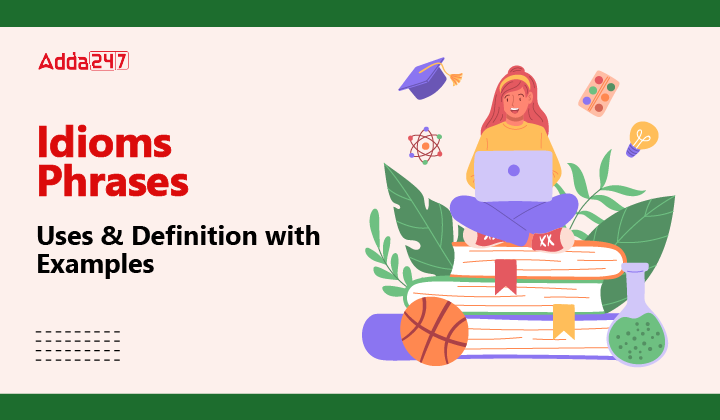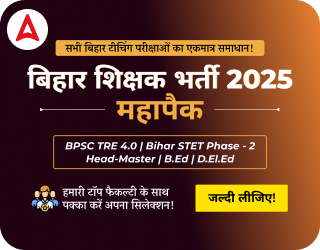
Candidates preparing for Government Teaching Jobs must have a grip on the English Language and its grammar. As English Grammar is a crucial part of any Teaching Exam, the understanding of the candidates about the nuances of the English Language becomes of paramount importance. One such essential topic is Idioms Phrases. In the following article, candidates will find in-depth information on the Idioms Phrases Uses & Definitions with Examples.
Define Idioms Phrases
Idioms are expressions or phrases that have figurative meanings that are different from their literal interpretations. They are commonly used in everyday language and often carry cultural or contextual significance. Idioms add colour and depth to the language and are frequently used to convey specific emotions or concepts.
Idiom Phrases and Their Characteristics
Understanding and using idioms can greatly enhance language skills, but it requires exposure to the idioms in context and familiarity with the culture or language community. Exploring idioms can be a fun and enriching way to delve into the intricacies of a language and deepen your understanding of its people and their unique expressions. Here are some striking Characteristics of Idiom phrases mentioned below.
Figurative Meaning
Idioms are figurative expressions, which means their intended meaning is not literal. Instead, idioms often rely on metaphorical or symbolic interpretations. For example, the idiom “kick the bucket” does not literally mean to kick a bucket, but rather it is a euphemism for dying or passing away.
Cultural Significance
Idioms are closely tied to specific cultures or language communities. They reflect the values, beliefs, and experiences of a particular group. Understanding idioms requires cultural familiarity and knowledge of the language’s nuances. Idioms can vary across different languages and regions, and translating them directly can sometimes lead to confusion or loss of meaning.
Fixed Expressions
Idioms are fixed expressions, meaning their structure and wording remain consistent. Changing or altering the words within an idiom may result in a loss of its intended meaning. For example, the idiom “a piece of cake” means something is easy, but if you were to say “a slice of cake” instead, it would not convey the same idea.
Non-compositional
Idioms cannot be understood by analyzing the individual words or their usual grammatical rules. Their meanings are often unique to the idiomatic expression itself. The figurative meaning of an idiom can’t be deduced by examining the literal meanings of its constituent words. For example, the idiom “break a leg” is used to wish someone good luck, but the individual words “break” and “leg” do not convey this meaning when taken literally.
Widely Used
Idioms are commonly used in everyday language. They are an efficient way to express complex ideas or emotions in a concise manner. Native speakers often use idioms without consciously realizing it, as they become ingrained in the language and culture over time.
Evocative and Expressive
Idioms can evoke vivid images or emotions, making language more colorful and engaging. They can convey subtle nuances and shades of meaning that may be difficult to express through literal language. Idioms are a way to communicate shared experiences and connect with others on a deeper level.
Why Use Idioms Phrases?
Overall, idioms and phrases serve as powerful tools for effective communication, cultural expression, and connection. They enable speakers and writers to convey complex ideas, evoke emotions, and engage their audience in a way that goes beyond literal language. In the following section, candidates will find the reasons for which Idioms phrases are used.
Expressing Emotions and Nuances
Idioms provide a colourful and expressive way to convey emotions, attitudes, and nuances that may be challenging to express with literal language. They add depth and richness to communication, making it more engaging and memorable.
Adding Imagery and Vividness
Idioms often use vivid metaphors or imagery that create mental pictures in the listener’s or reader’s mind. This imagery can make language more vivid, evocative, and impactful. It helps in painting a visual picture and making the message more memorable.
Enhancing Communication Efficiency
Idioms are concise expressions that encapsulate complex ideas or situations in a succinct manner. They allow speakers or writers to convey a wealth of meaning in a few words. This efficiency makes communication more efficient and effective, especially in situations where brevity is important.
Cultural and Social Connection
Idioms are deeply rooted in specific cultures and language communities. Using idioms helps to establish a sense of connection and shared cultural understanding with others. They can be a way to identify with a particular group and demonstrate fluency in the language and cultural norms.
Adding Humor and Playfulness
Idioms can inject humour, playfulness, and wit into conversations or written text. They often involve clever wordplay or unexpected comparisons, which can elicit laughter or amusement. Idioms can be used to create a lighthearted atmosphere or to make a point in a more engaging way.
Conveying Implicit Meaning
Idioms often carry implicit meanings or subtexts that may not be immediately apparent. They can be used to subtly convey ideas, opinions, or social commentary without explicitly stating them. Idioms allow for layered communication that invites interpretation and encourages deeper engagement with the message.
Preserving Cultural Heritage
Idioms are an integral part of a language’s cultural heritage. Using idioms helps to preserve and pass down cultural knowledge, traditions, and values from one generation to another. It keeps the language alive and vibrant, reflecting the history and identity of a community.
Examples of Idiomatic Phrases
In the following section, candidates will find a list of Idiom Phrases along with their meaning and usage. These are just a few examples of idioms, and there are countless others that are used in different languages and cultures.
These sentences demonstrate the usage of the idioms in different contexts. Remember that idioms can be flexible and used in various situations, so feel free to adapt them according to your needs.
| Examples of Idiomatic Phrases | ||
| Idiom Phrase | Meaning | Usage |
| Kick the bucket | This idiom means to die or to pass away. |
|
| Break a leg | This expression is used to wish someone good luck, especially before a performance or an important event. |
|
| Cost an arm and a leg | This idiom is used to describe something that is very expensive. |
|
| Bite the bullet | This phrase means to face a difficult or unpleasant situation with courage and determination. |
|
| A piece of cake | This idiom refers to something that is very easy or effortless to do. |
|
| Let the cat out of the bag | This expression means to reveal a secret or to disclose information that was supposed to be kept hidden. |
|
| Hit the nail on the head | This phrase is used when someone accurately or precisely identifies or solves a problem or situation. |
|
| Once in a blue moon | This idiom refers to something that happens very rarely or infrequently. |
|
| Break the ice | This expression means to initiate or start a conversation or a social interaction in order to make people feel more comfortable. |
|
| A taste of your own medicine | This idiom describes a situation where someone experiences the same negative treatment or consequences that they have inflicted on others. |
|









